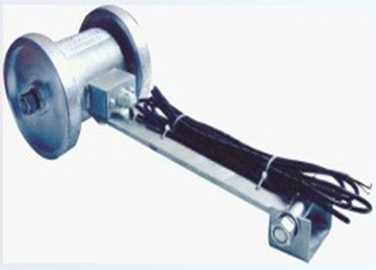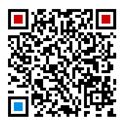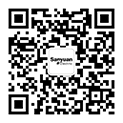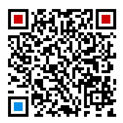The transmittance velocity sensor consists of a return disk with a hole or gap, a light source and a photocell. As the disk rotates with the axis under test, light can only reach the photocell through holes or gaps. When the photocell is irradiated, its reverse resistance is low and an electrical pulse is output. When the light source is covered by the disk, the reverse resistance of the photocell is very large, and there is no signal output at the output end. In this way, according to the number of holes or gaps in the disk, the rotation speed of the measured shaft can be measured. The number of disk holes or gaps is usually taken to be still, so the photoelectric converter can output 60 pulses per revolution of the axis under test. If the time base signal of the electronic counter is 1s, the measured shaft speed can be read out directly.
The principle of the reflective type of velocity sensor is the same as that of the transmittance type, which converts the perceived light changes into electrical signal changes by photocell, but it obtains the pulse signal by the reflection of light, usually by sticking the reflective material on the measured part of the measured axis to form a reflective surface. The commonly used reflective material is the special speed measuring reflective paper tape (tape), can also be replaced by reflective material such as aluminum foil, sometimes can also be coated in the measured part with white paint as a reflective surface. The reflector and reflector should be properly configured, and the distance between them is usually 5-15m. When the measured shaft rotates, the photoelectric element receives the pulsating light and outputs the corresponding electrical signal to the electronic counter, thus measuring the rotation speed of the measured shaft.
The output signal waveform of the photoelectric speed sensor is relatively neat, close to the standard square wave, and almost no interference signal is generated. But the transmittance type because the vibration can make the illuminant life decreases, therefore has the strong vibration condition to be unfavorable to use. The reflective one has no mechanical connection with the axis under test and is easy to use.

Application: speed sensor is widely used in production equipment, special locomotives, wind power generation and so on. Such as board, pipe in wire cutting, cable or sandpaper speed measurement; Because they are contactless, measuring sensitive or untouchable objects is very suitable, such as flannelette, fur and other textiles, coating or viscose surface, foam rubber surface object speed measurement; There are also metal processing industries such as measuring the speed of steel, double pumping speed measurement, coating process control.

 TEL:133-0520-1772
TEL:133-0520-1772








